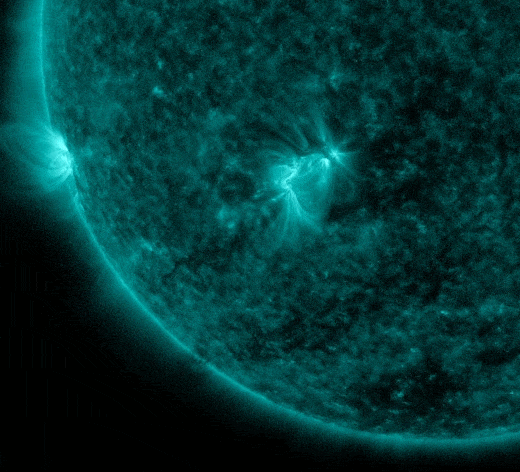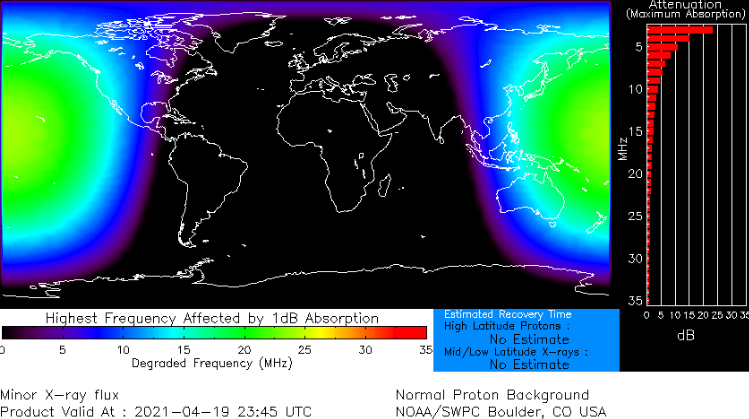Sunspot AR2816 erupted during the late hours of April 19th (2342 UT), producing a strong M1-class solar flare. NASA’s Solar Dynamics Observatory recorded the extreme ultraviolet flash:

This is one of the strongest flares of young Solar Cycle 25. A pulse of X-rays and ultraviolet radiation from the flare ionized the top of Earth’s atmosphere, causing a shortwave radio blackout over the Pacific Ocean. Mariners and ham radio operators in the area might have noticed unusual propagation conditions at frequencies below 10 MHz.

There is a chance that the explosion also hurled a coronal mass ejection (CME) toward Earth. If so, it would probably arrive on April 22-23. The jury’s still out, though. We need to wait for more data from SOHO coronagraphs to confirm the CME.
Solar cycle 25
You probably think Solar Cycle 25 is a dud. Think again. Despite long stretches of spotless quiet, the new solar cycle is actually running ahead of schedule. In this plot, the red curve shows NOAA’s predicted sunspot counts for Solar Cycle 25; the orange curve shows the new best fit:

“The sun is performing as we expected–maybe even a little better,” says Lisa Upton of Space Systems Research Corporation. She’s a co-chair of the NOAA/NASA Solar Cycle 25 Prediction Panel. “In 2019, the panel predicted that Solar Cycle 25 would peak in July 2025 (± 8 months) with a maximum sunspot count of 115 ± 10. The current behavior of the sun is consistent with an early onset near the beginning of our predicted range.”
If current trends hold, Solar Cycle 25 could peak as early as 2024, similar in strength to the relatively weak cycle (SC24) that preceded it. Don’t be fooled by the adjective, however. It’s like hurricane season. Even a “weak” season produces hurricanes–and all it takes is one good storm to do a lot of damage.

“I’m not surprised that people are grumbling about SC25 being a dud,” says Upton. “Weak cycles are typically preceded by long stretches of spotless days, and they are slow to ramp up. All of this is consistent with our prediction.”
Now the waiting begins. As sunspot counts increase over the next year, forecasters will be able to tell if Solar Cycle 25 is *really* following the official prediction or doing something completely different. Predicting the solar cycle is still an infant science, and much uncertainty remains. [Space Weather Archive]
Now subscribe to this blog to get more amazing news curated just for you right in your inbox on a daily basis (here an example of our new newsletter).
You can also follow us on Facebook and/ or Twitter. And, by the way you can also make a donation through Paypal. Thank you!
You should really subscribe to QFiles. You will get very interesting information about strange events around the world.














[…] Adaptation Terra Projects sources : https://www.spaceweatherlive.com/ / https://fr.wikipedia.org/ / https://www.lepoint.fr/ / https://strangesounds.org/ […]